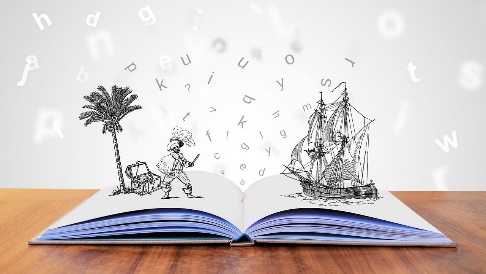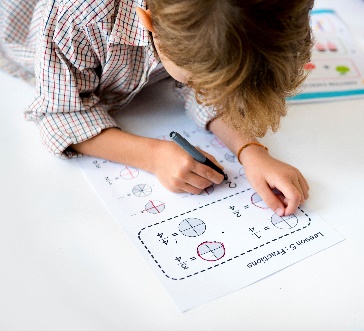Mathematics is often seen as a difficult and intimidating subject, particularly for young learners. Many children develop math anxiety—a fear of numbers and equations—that can persist throughout their education. However, recent research by Gerardo Ramírez and colleagues highlights how emotionally supportive and context-rich environments can significantly reduce math anxiety in early learners. Their findings suggest that math anxiety may be reduced through engaging and relatable learning experiences. One particularly effective approach is the use of storytelling.
By integrating narratives into math instruction and combining them with methodologies such as STEAM (Science, Technology, Engineering, Arts, and Mathematics), adventure learning, and experiential learning, educators—and to some extent, parents—can support children in approaching math with curiosity and confidence. This article explores how storytelling can complement and enhance these modern educational strategies, offering a more approachable, emotionally engaging way for young learners to perceive and interact with math.
The Power of Storytelling in Math
Storytelling has been a fundamental tool for knowledge transfer throughout history, dating back to our ancestors who used oral narratives to pass down cultural values, survival skills, and family traditions across generations. This time-honored practice of using stories to make information memorable and meaningful remains just as relevant today—especially in education. When applied to mathematics, stories provide context, meaning, and emotional connections, making abstract concepts more tangible and relatable for children. Instead of presenting numbers in isolation, educators can weave them into stories that captivate students’ imaginations.
For example, a teacher might introduce fractions through a story about a baker who needs to divide a cake among guests. By following the baker’s challenges and solutions, students understand the practical applications of fractions while enjoying an engaging narrative. Such an approach shifts their focus from fear of getting the wrong answer to solving problems in a meaningful context.
Another powerful example is integrating math into adventure stories where students become the heroes of their own mathematical journeys. For instance, they might have to solve equations to cross a bridge in an enchanted forest or use geometry to navigate a treasure map. These approaches engage students emotionally and intellectually, making math less about abstract numbers and more about exciting problem-solving adventures.
Connecting Storytelling with STEAM and Adventure Learning

The STEAM approach to education integrates the arts into STEM subjects, fostering creativity alongside logical thinking. Storytelling is at the heart of this integration, as it allows students to visualise and immerse themselves in mathematical concepts. When students engage in hands-on projects that blend mathematics with storytelling and the arts, they develop a deeper and more enjoyable understanding of numbers.
One way to implement this idea is through a “Math Mystery” adventure. In this approach, instead of working through standard problem sets, learners are given a mystery to solve that requires mathematical reasoning to unlock clues. For example, they could play detectives solving a robbery case, where every clue is hidden in a mathematical equation, or scientists deciphering alien messages using number patterns. These interactive adventures can help transform math from a passive subject into an exciting experience, potentially reducing anxiety and boosting engagement.
Adventure learning further enhances this approach by taking students outside the traditional classroom setting. A math treasure hunt, where students must solve real-world math challenges to reach the final prize, is a powerful way to make numbers more accessible and enjoyable. Teachers can also frame outdoor math activities with narratives, such as pretending students are archaeologists using coordinates to find a lost civilisation. By physically interacting with math in a real-world environment within the structure of a compelling story, students gain confidence and an intuitive understanding of mathematical principles.
Storytelling as the Core of Experiential Learning
Experiential learning encourages students to learn through direct experience. Storytelling enhances this approach by turning real-world applications of math into narratives that make the subject more engaging and memorable.
For instance, a class project on budgeting for a school event can be framed as a challenge where students act as business owners planning a festival. They must calculate costs, manage expenses, and ensure profitability. By working with real numbers in a structured, story-based scenario, children see how math is an essential life skill rather than just an academic requirement.
Another approach is integrating storytelling with hands-on projects, such as building a small bridge using measurement and geometry principles. Instead of merely assigning measurements and calculations, the teacher can create a story where the students are civil engineers designing a bridge to connect two separated communities. This method can help transform the activity from a routine exercise into an engaging problem-solving mission.
Through experiential storytelling, students can also participate in role-playing activities where they act as famous mathematicians, astronauts planning a space mission using calculations, or architects designing sustainable cities. By giving context to math through stories, students are more likely to retain information and develop a lasting appreciation for the subject.
The Benefits for Students and Teachers
When teachers use storytelling as the foundation for math instruction, they create a more dynamic and engaging classroom, which can help learners feel more connected to the subject matter. This, in turn, can lead to better retention, increased motivation, stronger problem-solving skills, and a solid foundation in mathematics.
For teachers, storytelling provides a flexible and rich pedagogical tool. Instead of relying solely on textbooks and drills, they can create an enriched learning environment that accommodates different learning styles. Moreover, transitioning from traditional math instruction to a more creative, narrative-based approach offers teachers the opportunity to expand their own knowledge of storytelling techniques in the context of mathematics teaching. This shift not only enriches their teaching practice but also provides personal refreshment, stimulating their imagination and enhancing their connection with learners. When pupils are actively engaged in a story-driven lesson, teachers experience less frustration and more satisfaction, which contributes to a positive and productive classroom culture, as confirmed by the teachers of the early education department at Primary School No. 20 in Warsaw.
Conclusion
Math anxiety should not be seen as an insurmountable barrier but rather as a challenge that can be addressed through creative and engaging teaching methods. Research and classroom experiences have shown that by using storytelling as a central strategy, educators can effectively incorporate methodologies like STEAM, adventure learning, and experiential learning, making math more accessible, enjoyable, and meaningful for young learners. As some teachers have noted, storytelling not only reduces anxiety but also fosters a deeper connection to mathematical concepts.
Teachers who embrace these methods may see a positive change in their students. Instead of fearing math, children are likely to approach it with excitement and confidence, eager to explore the possibilities that numbers can offer. By breaking the myth that math is inherently difficult, we can open the doors to a future where more learners have the opportunity to succeed and thrive in mathematics.
Resources
- Ramírez, G., Gunderson, E. A., Levine, S. C., & Beilock, S. L. (2018). Math anxiety, working memory, and math achievement in early elementary school. Journal of Cognition and Development, 19(1), 1–17. https://doi.org/10.1080/15248372.2017.1421532
- Stuart J. Murphy’s MathStart Series: a collection of books that teach mathematical concepts through storytelling. https://www.mathstart.net/
- Maths through stories: Transforming the way mathematics is taught and learned globally - presents one mathematical story at a time https://www.mathsthroughstories.org/
- PhET Interactive Simulations: provides interactive math and science simulations that can be incorporated into storytelling lessons. https://phet.colorado.edu/
- Copernicus Science Centre (Centrum Nauki Kopernik): offers interactive exhibits and resources that integrate science and art, fostering experiential learning. https://www.kopernik.org.pl/en/learning
- EC1 Science and Technology Center in Łódź: features exhibitions that blend technology and storytelling, providing opportunities for adventure learning. https://ec1lodz.pl/centrum-nauki-i-techniki/
- Matematyka Innego Wymiaru: an initiative that uses storytelling to teach mathematical concepts, offering workshops and materials for educators. http://matematykainnegowymiaru.pl/

